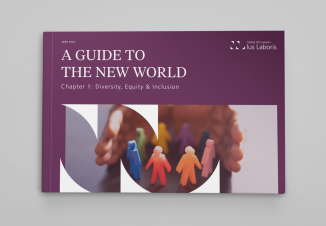
Migration has been a common phenomenon in human history, as people have moved from one place to another in pursuit of better opportunities and living standards. This trend continues today, and as a result, many countries are becoming more ethnically diverse. However, this diversity also presents challenges, one of which is racial discrimination. The United Nations’ International Convention on the Elimination of All Forms of Racial Discrimination (1) has a wide definition of the meaning of race discrimination, which encompasses not only colour, but “any distinction, exclusion, restriction or preference based on race, colour, descent, or national or ethnic origin which has the purpose or effect of nullifying or impairing the recognition, enjoyment or exercise, on an equal footing, of human rights and fundamental freedoms in the political, economic, social, cultural or any other field of public life.” To better understand the integration of immigrants, we have therefore taken a look at recent migration trends.
Recent data indicates that the number of permanent migrants to OECD countries (i.e., those who have settled in their new countries) increased somewhat in 2021, following a record decrease in 2020 due to COVID-related restrictions, and reached a record level in 2022. In 2021, 4.8 million new permanent immigrants were counted in OECD countries, a 22% increase compared to 2020, while in 2022, the number of permanent migrants to OECD countries (not including Ukrainian refugees) reached a high of 6 million people (2). The United States continued to receive the largest influx of permanent immigrants among OECD countries in 2022.
Temporary labour migration to OECD countries has surpassed pre-pandemic levels as well, with over 2.4 million work permits and authorisations granted, marking a significant 77% year-on-year increase. Poland alone saw approximately 2 million requests for various types of work authorisations, including renewals, reaching a record high.
Labour market outcomes for migrants saw widespread improvement across most OECD countries (2). The average employment rate for migrants in these countries rose from 69.9% in 2021 to 72.3% in 2022, with 25 out of 30 OECD nations showing progress. This brought the average migrant employment rate to nearly equal that of native-born individuals (72.7%). This positive trend was evident in major migrant-hosting countries such as Australia, Canada, France, the UK and the US, as well as in Central Eastern European nations such as the Czech Republic, Hungary, and Slovenia. While migrants generally experienced better labour market conditions, the extent of improvement varied, influenced partly by domestic labour market dynamics and migrant population composition. Despite overall progress, a gap in employment rates between migrants and native-born individuals persists, particularly in western European countries such as the Netherlands (-13.7 percentage points), Germany (-9.1 percentage points), and France (-7.6 percentage points). In contrast, other OECD nations such as the US saw an increase of +3.2 percentage points, and in some Latin American countries, migrants even outpaced native-born individuals in employment rates.
Several OECD countries have undergone significant changes to their migration policies over the past year (2). The goals and effects of these reforms vary widely. While some nations are striving to attract immigrants to address labour shortages and skill gaps, others are committed to reducing overall migration levels.
In response to recent elections, Sweden and Finland are tightening their migration policies. Sweden’s new government, which took office in October 2022, has proposed several reforms aimed at reducing net migration. These include stricter asylum laws, tougher conditions for low-skilled labour immigration (including higher salary thresholds), and tighter regulations for family reunification. Similarly, Finland’s new coalition government, formed after the April 2023 elections, intends to reduce refugee quotas and family reunification, raise standards for work-based immigration, and impose stricter language and residency requirements for citizenship.
In the UK, the post-Brexit immigration system seeks to prioritise selectivity in migration, particularly by limiting low-skilled migration and curbing irregular border crossings. Faced with a surge in immigration numbers in 2022, partly due to a significant rise in dependents of international students, the government announced restrictions to student visa routes in May 2023. Only international students in post-graduate research programmes will be permitted to bring family members.
Spain has revised its General Immigration Law to simplify migration procedures, aiming to address ongoing labour shortages and attract legal migrants to fill needed positions. The reform makes it easier to obtain work permits and simplifies migration processes for various groups, including students and seasonal workers. In March 2023, the German Government approved a bill to reform the German Immigration Act for Skilled Workers. This reform, passed into law in July, expands eligibility for the EU Blue Card, relaxes requirements for skilled labour immigration, and facilitates temporary low-skilled labour migration. Meanwhile, the Australian Government is reassessing its immigration system, focusing on rebalancing temporary and permanent programmes to attract and retain global talent. As part of this effort, the government aims to create more pathways for skilled migrants to obtain permanent residency. Other proposed changes include addressing occupational shortages and streamlining intra-company transfers.
Discover more about Discrimination on our Global HR Law Guide



